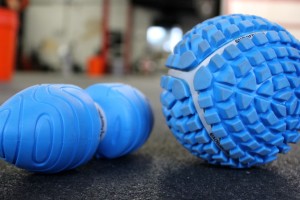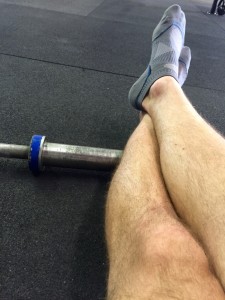Prehab
An ounce of prevention is worth a pound of cure. -Benjamin Franklin
Fix it before it breaks down, maintain it, keep it in good working order. Whatever “it” is will surely last longer when treated in this manner. When the “it” is your body, I would say that the importance should rank high.
Many of you are familiar with the term rehab. The definition of rehab is a specific program of treatment for an injury. Prehab on the other hand is a word you won’t find in the dictionary, but believe me when I tell you it’s the ounce of prevention for many injuries I see in my clinic.
As athletes begin to tell me about their current injury, many start with, “Well, I had this unusual soreness for a bit before my calf strain.” or “Yea, my hamstring felt pretty tight before I even got out on the track. Then I pulled it during sprint drills.”
Most athletes (and even weekend warriors) know their potential trouble spots. The question, though, is what are they doing about it? Ignoring pain, tightness, swelling or any other warning signal is a sure-fire recipe for disaster. That unusual soreness in the lower leg could result in an achilles rupture. The hamstring at best is a 3-4 week process of healing when it’s strained. Both of those injuries could have possibly been avoided by taking prehab measures.
What is Prehab?
Prehab involves activities that restore normal tracking patterns to joints and muscles. It includes measures like- massage, self-moyfascial release, stretching, yoga, active recovery movements and the like. The goal of prehab is to balance the repetitive motion and loading of your body relative to your given sport. In other words, since most sports or activities use certain muscles over and over the tendency of those muscle to be tight and overworked is great. Over time this creates imbalances in how they function. Excess pull of these muscles relative to their counterparts can lead to injury.
What can I do for Prehab?
Two of the better prehab techniques that are most readily available would be yoga and self-myofascial release. A good session of yoga will work to help you stretch chronically tight areas, de-stress your body and work many necessary functions such as coordination and balance. Self-myofascial release is the use of a foam roller, lacrosse ball or other tool to work on tight or painful areas of the body. Myo refers to muscle tissues and fascia is a thin, strong covering over many structures of the body including muscles. In cases of injury or chronic overuse, myofascial tissues tend to become shortened and develop adhesions that restrict the normal slide and glide of properly functioning muscles. The pressure of rolling these area breaks the adhesions, lengthens the targeted muscles, along with restoring better blood and lymphatic flow to the area.
Not all injuries are a result of not taking care and listening to your body. Accidents happen. Traumatic hits take place. Those are different. But if you dismiss the warning signs of repetitive stress, you may find yourself out searching for a pound of cure. In which case, we’ll be here for you at Align Waxahachie.
To schedule an appointment, click HERE.
_______________
 Dr. Chris attended Texas Tech University for his undergraduate work and went on to Parker Chiropractic College where he received his Bachelor of Science in Anatomy as well as his Doctorate in Chiropractic in April of 2001. His love of sports (soccer, mountain biking, running, adventure racing, and CrossFit) led him to pursue multiple hours of training in myofascial release, trigger point therapy and other modalities to benefit athletes. His goal is to get athletes and weekend warriors back into their training and on the field as fast as possible.
Dr. Chris attended Texas Tech University for his undergraduate work and went on to Parker Chiropractic College where he received his Bachelor of Science in Anatomy as well as his Doctorate in Chiropractic in April of 2001. His love of sports (soccer, mountain biking, running, adventure racing, and CrossFit) led him to pursue multiple hours of training in myofascial release, trigger point therapy and other modalities to benefit athletes. His goal is to get athletes and weekend warriors back into their training and on the field as fast as possible.
He also owns and operates CrossFit Waxahachie, a premier training facility for weight loss and functional fitness.

